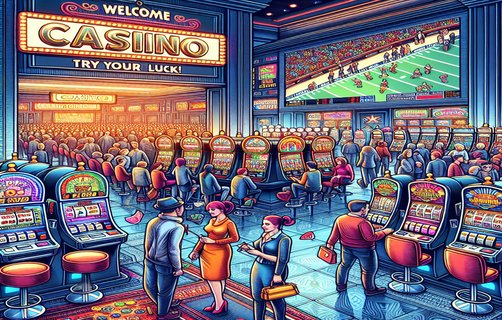The Dynamics of Game Layout and Luck in Board Games
बोर्ड गेम्स के लेआउट और भाग्य का गहराई से विश्लेषण
Board games are a cornerstone of social interaction and strategy, blending creativity with competition. The layout of a game board significantly impacts gameplay, influencing players' decisions and their paths to victory. From simple grids to complex environments, the design invites players to engage in tactical maneuvers and strategic thinking.
When considering the layout, board design goes beyond aesthetics. It serves as a functional map that dictates how players navigate challenges. In some cases, the physical arrangement can create barriers or open pathways that expose strategic advantages. A well-designed game board not only engages players but also fosters exciting interactions.
Rule exceptions handling is another critical aspect of board games that can either enhance or complicate gameplay. Once players are familiar with the basic rules, exceptions can introduce twists that keep the game dynamic and unpredictable. Well-articulated exceptions can prevent gameplay stagnation, yet poorly explained ones can frustrate players. It’s essential to strike a balance between innovation and clarity to maintain an engaging experience.
Luck plays an undeniable role in board games. From dice rolls to card draws, chance introduces an element of unpredictability that levels the playing field among players of different skill levels. However, balancing the luck factor is key. Too much randomness can overshadow strategy, making the game feel less impactful. Designers must create a system where skillful play is rewarded while still allowing for surprising outcomes.


The types of playing pieces utilized can further affect game dynamics. Unique pieces with different abilities can encourage varied strategies, encouraging players to think creatively about their moves. Choosing well-defined pieces can enhance the game's thematic elements while enriching the gameplay experience.
Chance-related outcomes often dictate the ebb and flow of gameplay. Games that rely heavily on chance can lead to unpredictable and exciting moments but can also frustrate players who favor strategy. Thus, effective game design requires a delicate dance between skill and luck to engage a broad audience.
Finally, board area expansion can open up new possibilities within a game. As players progress, introducing new areas can augment strategic depth, providing fresh goals and increasing interaction among players. Thoughtful expansion mechanics can refresh gameplay, keeping players invested.
बोर्ड गेम्स सामाजिक इंटरैक्शन और रणनीति के मूल आधार हैं, जो रचनात्मकता को प्रतिस्पर्धा के साथ जोड़ते हैं। एक गेम बोर्ड का लेआउट गेमप्ले पर महत्वपूर्ण प्रभाव डालता है, खिलाड़ियों के निर्णयों और विजय के रास्तों को प्रभावित करता है। सरल ग्रिड से लेकर जटिल वातावरण तक, डिज़ाइन खिलाड़ियों को रणनीतिक चालों और विचारशीलता में संलग्न करने के लिए आमंत्रित करता है।
लेआउट के विचार करते समय, बोर्ड डिज़ाइन सौंदर्यशास्त्र से परे बढ़ जाता है। यह एक कार्यात्मक मानचित्र के रूप में कार्य करता है जो दर्शाता है कि खिलाड़ी चुनौतियों से कैसे निपटते हैं। कुछ मामलों में, भौतिक व्यवस्था बाधाएं उत्पन्न कर सकती है या ऐसे रास्ते खोल सकती है जो रणनीतिक लाभ प्रदर्शित करते हैं। एक अच्छी तरह से डिज़ाइन किया गया गेम बोर्ड न केवल खिलाड़ियों को संलग्न करता है बल्कि रोमांचक इंटरैक्शन को भी बढ़ावा देता है।
नियम अपवादों का प्रबंधन बोर्ड गेम्स का एक और महत्वपूर्ण पहलू है जो गेमप्ले को बढ़ा या जटिल बना सकता है। जब खिलाड़ी मूल नियमों से परिचित हो जाते हैं, तो अपवाद ऐसे ट्विस्ट पेश कर सकते हैं जो खेल को गतिशील और अप्रत्याशित बनाए रखते हैं। अच्छे से स्पष्ट किए गए अपवाद खिलाड़ी के अनुभव को स्थिरता से बचा सकते हैं, जबकि खराब रूप से समझाए गए अपवाद frustrate कर सकते हैं। एक आकर्षक अनुभव बनाए रखने के लिए नवाचार और स्पष्टता के बीच संतुलन बनाना आवश्यक है।
भाग्य बोर्ड गेम्स में एक नकारात्मक भूमिका निभाता है। डाइस रोल से लेकर कार्ड ड्रॉ, मौका एक अप्रत्याशित तत्व प्रस्तुत करता है जो विभिन्न कौशल स्तरों के खिलाड़ियों के बीच प्रतिस्पर्धा को स्तरित करता है। फिर भी, भाग्य के तत्व को संतुलित करना मुख्य है। अत्यधिक विवशता रणनीति को छाएगी, जिससे खेल कम प्रभावी हो जाएगा। डिज़ाइनरों को एक ऐसा सिस्टम बनाने की आवश्यकता है जहां कुशल खेल को पुरस्कृत किया जाए जबकि आश्चर्यजनक परिणामों की अनुमति भी दी जाए।
खेल के टुकड़ों का चयन गेम डायनामिक्स को और प्रभावित कर सकता है। विभिन्न क्षमताओं के साथ अद्वितीय टुकड़ों का उपयोग करके खिलाड़ियों को विभिन्न रणनीतियों को प्रोत्साहित किया जा सकता है, जिससे उन्हें अपने चालों के बारे में रचनात्मक रूप से सोचने के लिए प्रोत्साहित किया जाता है। स्पष्ट रूप से परिभाषित टुकड़ों का चयन खेल के थीम तत्वों को बढ़ा सकता है जबकि गेमप्ले अनुभव को समृद्ध कर सकता है।
संयोग से संबंधित परिणाम अक्सर गेमप्ले के प्रवाह को निर्धारित करते हैं। गेम्स जो भारी रूप से संयोग पर निर्भर करते हैं वे अप्रत्याशित और रोमांचक पलों की ओर ले जा सकते हैं लेकिन उन खिलाड़ियों को निराश कर सकते हैं जो रणनीति को पसंद करते हैं। इसलिए, प्रभावी गेम डिजाइन को सरल और भाग्य के बीच एक नाजुक नृत्य की आवश्यकता होती है ताकि एक व्यापक दर्शकों को संलग्न किया जा सके।
अंत में, बोर्ड क्षेत्र का विस्तार गेम में नए संभावनाओं को खोल सकता है। जैसे-जैसे खिलाड़ी आगे बढ़ते हैं, नए क्षेत्रों का परिचय रणनीतिक गहराई बढ़ा सकता है, नए लक्ष्यों को प्रदान कर सकता है और खिलाड़ियों के बीच बातचीत को बढ़ा सकता है। सोच-समझकर किए गए विस्तरण तंत्र गेमप्ले को ताजगी प्रदान कर सकते हैं, जिससे खिलाड़ियों की रुचि स्थापित रहती है।

comments
GameWizard99
This article brilliantly highlights the interplay of strategy and luck in board games!
StrategistGuru
I loved the insights on rule exceptions—it's such an important aspect of game design.
LuckBeADie
Great read! Balancing chance with strategy can make or break a game.
BoardGameBuff
The discussion on board area expansion is spot on. It adds layers to gameplay.
TacticalThinker
Really appreciated the look into how playing pieces can shape strategy.
GameEnthusiast
Feel like luck should always be a factor, but strategy should prevail more often!